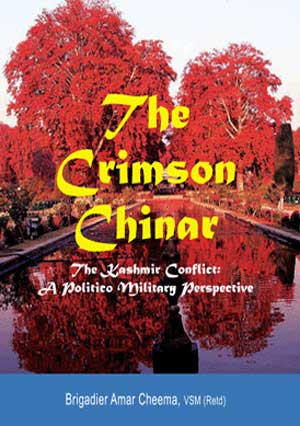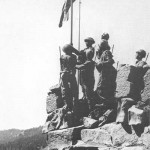Pakistan Forces for the Operation
In addition to Pakistan 14 Division, comprising of four brigades of twelve battalions, Pakistan GHQ flew in 9 and 16 Divisions under a massive airlift, unimaginatively codenamed ‘Fly In,’ using the Pakistan International Airlines and C-130 transport aircraft and was completed by 6 April.
This massive force had been built up to crush the rebellion expected from the six battalions of the East Bengal Regiment and approximately 15,000 strong East Pakistan Rifles. The Bengali troops in East Pakistan were dispersed geographically to break their cohesion and disrupt their command and control channels. Tikka Khan was determined to crush the revolt before it gets out of hand but his methods were so harsh that he antagonised the population.
The Crackdown. The crackdown which started from midnight of 25 March was brutal and swift-no quarters nor mercy was shown as should have been expected for their co-religionists and countrymen. The genocide which followed resulted in an assessed death of 26,000 persons as admitted by Pakistan themselves, and 3,00,000 as claimed by Bangladesh,[10] which included serving Bengali military personnel.
The brutalities and the wanton rape, shocked the conscience of the world and had immediate repercussions on India who being the neighbour was deluged by approximately ten lakh refugees. The Awami Party leadership fled from prosecution and formed a provisional government under Mr. Tajuddin Ahmad. On the military side, the Bengali resistance which had started on 26 March itself was organised under Colonel (Retd) MAG Osmania who was made the overall commander and the country was divided into four under sector commanders, who functioned under Prime Minister Tajuddin Ahmad’s Government-in-Exile. By the middle of June, the entire country was under Pakistan military control and things were back to ‘normal.’ However, with support from India, the rebellion flourished. This stretched the Pakistan Security Forces as they not only had to guard the border against infiltration, but also police the countryside and guard vulnerabilities. “The eventual strain of combating the insurgency caused Pakistan to attack India on December 3, 1971, with the objective to stop Indian support for the Mukti Bahini.”[11]
Cold War Geo-Politics
The US policy of appeasement of Pakistan to reach out to China has been dubbed as “a blundering diplomatic performance which can have few parallels.” As a consequence of the Sino-Soviet split of 1969, USA was trying to alter the global balance of power and was attempting to align the Chinese with them against the Soviets.
Since the road to Peking was chosen through Islamabad, Nixon was inclined to assist Yayha, and America’s new found love for Pakistan was a result of Yayha facilitating Kissinger’s’ secret trip to China in July 1971. Since Pakistan was a close ally of the China, Nixon wanted to negotiate a path breaking rapprochement with China and by doing so, deny strategic space to USSR in South Asia.
Kissinger’s visit set the grounds to broker a new power balance for the future, and this was to be followed up with a Presidential visit to China in February 1972 to concretise the deal. Nixon feared that an Indian invasion of West Pakistan at this crucial moment of American history could derail the process and pave the way for Soviet intervention in the region.
This would not only undermine the global position of the United States and the regional position of America’s new ally, China, but also open up another theatre of super power rivalry. In a way, this was the start of the ‘New Cold War’ and as a result of the growing Sino-American relations which involved Pakistan, India was pushed further into the Soviet camp.
Nixon now went on and (illegally) sanctioned military supplies to Pakistan, routing them through Jordan and Iran, while encouraging China to posture militarily to restrain India. Nixon’s famous remarks on the policy option memo prepared by Henry Kissinger, “Don’t squeeze Yayha at this time” is perhaps the most telling policy statements and indicative of the US position of the time.[12] Pakistan’s military dictator became the conduit to bring American democracy and Chinese communism together to confront the Soviet Union.
Indo-Soviet Strategic Convergence
While the US-Sino relations were envisioning a new future, there was also the concurrent improvement of Indo-Soviet relations. By 1965, the Soviet Union was already the second largest contributor to India’s development and Soviet aid was extended on the basis of long-term, government-to-government programmes, which covered technical training for Indians, supply of raw materials, progressive use of Indian inputs, and markets for finished products.
Thus, the Soviet contribution to Indian economic development was generally regarded by foreign and domestic observers as ‘positive.’ Till 1969, the Soviet Union had undertaken an even handed position and had even supplied a limited quantity of arms to Pakistan in 1968. However, this underwent a sea change after the signing of the twenty-year Indo-Soviet ‘Treaty of Peace, Friendship, and Cooperation’ in August 1971.[13] Under the treaty, USSR gave assurances that if a confrontation with the United States or China manifests, she would take counter-measures and this assurance was enshrined in the Indo-Soviet friendship treaty. India benefited because of this treaty since the Soviet Union came out openly to support the India and it was this that acted as a deterrent for both China and USA and played a major part in the outcome of the war.
The Sino-Indian Border Flare Up of 1967
On 11 September, 1967, in response to the Chinese troops opening up automatic fire on the Indian troops caught in the open at Nathu La (Sikkim), the Indians had retaliated with automatic fire and mortars. When the Chinese responded, General Sagat Singh opened up with his 5.5 inch medium artillery guns which created havoc amongst the Chinese.
The flare up continued for four days wherein the Chinese suffered over 400 casualties, while the Indians also had 65 killed and 145 wounded. This unexpected Indian response also helped cool Pakistan’s ardour.
The Downslide to War
Pakistan and India both sensed war. On 22 November, Pakistan even went to the extent of using her air force and tanks for the first time on the eastern front. In the brief dog fight that ensued, three of the four Sabre jets of the PAF were shot down by Gnats, while the Indian ground forces knocked out thirteen tanks.
As a consequence, declaring a state of emergency on 23 November, 1971, Yayha asked his people to be prepared for war. Pakistan had got ensnared into this situation by choosing to seek a military solution to what was essentially a political problem. There can be no two views that Pakistan had brought this predicament on herself by her misplaced self-beliefs and alienation of the Bengalis.
Notes:
[1] Maqbool Bhat was the first of many home grown Kashmiri militants. He belonged to Trehgam in Kupwara District, and after schooling at the St Joseph’s College at Srinagar, went to Peshawar for higher studies which marked the militant phase of his education.
[2] JKLF traces its origin to the Jammu and Kashmir National Liberation Front, which was an offshoot of the Plebiscite Front. The group was created as a separatist movement which after being re-incarnated in Birmingham, spread its wings to many capitals of Europe and in both halves of J&K, indicative of its financial backing by powerful lobbies. The Front later split with the faction led by Yasin Malik in India, who later shunned violence, while the militant faction continued to operate under Amanullah Khan from POK. The front has since lost the backing of the ISI, having been overshadowed by more militant groups in the Indian part of J&K.
[3] The theory of the martial races superiority was espoused by Lord Roberts in the aftermath of the Indian War of Independence of 1857. Roberts, who served as the C-in-C of the Madras Army and Bengal Armies for the cumulative period of thirteen years from 1881 to 1893, preferred politically reliable Indian races for meeting the British military ends in India. The aim was to in some way keep the ‘unreliable’ Hundustanis of Central India who had spearheaded the ‘mutiny,’ out of the army.
[4] Amin AH, Major (Retd) Note 57, The Pakistan Army: From 1965 to 1971 as available at http://www.defence.com/2000/nov/pak_army.htm.
[5] The programme was proclaimed by Mujib as ‘Our Charter of Survival’ which called for ‘Self Government’ with considerable autonomy for East Pakistan, and bordered on ‘separatism.’ The programme called for all subjects less defence and foreign affairs, and even called for a separate fiscal system with a separate accounting and a different currency, with the freedom of carrying out independent international trading. By asking for even a separate militia for the Eastern Wing were practically asking for ‘independence’ under a thin veneer of remaining within the Islamic Republic of Pakistan.
[6] Prasad SN, Official History of the 1971 War, p. 65.
[7] As available at http:/terrorism.about.com/od/originshistory/a/JKNLF Hijacking.htm. Qureshi was tasked by Maqbool to hijack a plane to highlight the Kashmiri quest for independence. As per General Candeth, once the plane landed at Lahore, Qureshi asked the pilot, Captain G S Oberoi to announce on the loudspeaker that Hashim Qureshi has brought the plane, implying that the plane was expected. In addition, after the hijacked plane had been in Lahore for eighty hours, Pakistani Intelligence asked him to destroy the plane. Kerosene was then spread and Qureshi was given the match. Though arrested, both the hijackers were granted political asylum and met by no less a personage than Z A Bhutto. Though he was subsequently sentenced to a term of nineteen years in Pakistan, Qureshi was eventually released after eight years. Married and now settled in Pak, he has since shunned violence and established the ‘Maqbool Bhat National Welfare Trust’ for widows and orphans of Kashmiri martyrs.
[8] Later President of Bangladesh, who subsequently ousted Sheikh Mujib in a coup which resulted in the killing of the Sheikh.
[9] Wikipedia: Op Searchlight.
[10] Wikipedia: Op Searchlight.
[11] Ibid.
[12] The National Security Archives, Handwritten note from President Nixon on 28 April, 1971 on a National Security Decision Paper.
[13] The treaty signed on 9 August, 1971 was a significant deviation from India’s ‘non-alignment’ policy which was to equi-distance India from both the principals of the Cold War and was the key for India to counter balance USA and China in the explosive situation brewing up in South Asia.





